Right This Way for Everything You Need to Know About Pansexuality
And how it's different from bisexuality.

By now you’re probably aware that sexuality is extremely nuanced, hence all the letters in LGBTQIA+. There aren’t just two options—gay or straight—when it comes to attraction, but a whole bunch of different labels and identities that can make you feel seen, heard, and validated. One popular term that fits in the middle of the Kinsey scale is pansexuality, and if you’re wondering what pansexual actually means, you’ve come to the right place.
According to the Human Rights Campaign, someone who is pansexual “has the potential for emotional, romantic, or sexual attraction to people of any gender.” Looking at the term itself, “pan” means “all” in Greek, so pansexuality = sexual attraction to a variety of, or all, genders.
If this sounds a lot like bisexuality, you’re not wrong! In fact, pansexuality falls under the larger “bi+ umbrella.” So it’s a facet of bisexuality, but when you dig a little deeper, it’s clear the term actually means something different than just an attraction to multiple genders.
Gabrielle Blonder, a member of the board of directors of the Bisexual Resource Center, previously told Cosmopolitan that pansexuality is “often defined as ‘attraction regardless of gender.’” The key here is that gender doesn’t determine attraction. In fact, pansexual people usually don’t prefer one gender over another.
The use of the term is rapidly catching on, and celebs like Sam Smith, Miley Cyrus, and Janelle Monáe have all used it to describe their sexual preferences. So whether you’re trying to find a term that feels authentic for you, or you simply want to become a more informed ally, you’re in luck. Below, we’ve outlined exactly what pansexuality is (and isn’t!) so you can better support the LGBTQIA+ community. Happy learning!
What does it mean to be pansexual?
Pansexual is defined as “someone who is attracted to anyone regardless of their sex, identity, or gender identity,” explains family relationship specialist Tarra Bates-Duford, PhD, at Family Matters Counseling. Pansexuality doesn't necessarily mean you are attracted to everyone, but that you're typically open to being sexually attracted to anyone regardless of their gender.
Many pansexual people describe themselves as being attracted to people based on personality and moral character, not gender, Bates-Duford says—meaning they could be attracted to someone non-binary, genderqueer, genderfluid, binary, transgender, male, female, or any other gender. Queer educator and social worker Zoe Stoller previously told Cosmopolitan that while many pansexual people don't have gender preferences in regard to attraction, some do, and that's still totally valid.
And while we're on the topic of gender, it's important to note that sexual orientation (like pansexuality) is different from gender identity. Sex is typically assigned by doctors at birth depending on genitals, while gender is a social construct.
How is pansexuality related to bisexuality?
As mentioned, pansexuality falls under the bisexuality umbrella, and both terms mean being physically attracted to multiple genders. Generally, though, identifying as pansexual means you don’t focus on gender in your sexual attraction to other people and can be attracted to all possible identities, sexologist Carlen Costa explains.
Before you think this means pansexuality is the "correct" term and "bisexuality" is less enlightened or worse, transphobic, Blonder said you gotta pump the breaks. The misconception that someone who identifies as bisexual adheres to the binary is outdated. In reality, attraction to cis-men and cis-women is no longer the accurate definition of the bi+ experience. Instead "bisexual" simply means you're attracted to your own gender and at least one other gender. Both bisexual and pansexual people can be attracted to trans and non-binary folks, and there are trans and non-binary people who are pansexual and bisexual.
If you're trying to figure out which label is right for you, it really comes down to whichever term makes you feel safe and validated. Since the term bisexual is older, millennials often gravitate toward it while Gen Z tends to prefer using "pansexual." And if you find neither label fits or you change your mind down the line, that's okay too!
Is pansexual the same as panromantic?
“Pansexuality” is often used alongside the term “panromantic,” but the two are not the same. Panromantic refers to someone who is romantically attracted to people of all gender identities, whereas pansexuality is about sexual attraction.
What is it like to be pansexual?
Multiple celebrities have come out as pansexual and work to spread awareness about the identity. In a 2018 Rolling Stone interview, Janelle Monáe said she identified as bisexual at first, but after reading up on pansexuality, she felt like, “These are things that I identify with too. I’m open to learning more about who I am.” She also explained that “being a queer Black woman in America, someone who has been in relationships with both men and women—[I consider myself] to be a free-ass motherfucker."
Miley Cyrus also popularized the term when she opened up about her sexuality in Elle UK in 2015. Miley stated that she doesn’t “relate to what people would say defines a girl or a boy,” in an interview with Out magazine.
Perhaps a more surprising public figure to identify as pan is Texas State Representative Mary Gonzalez, who waited until after her campaign run in 2015 to reveal her orientation because she feared she “would have overwhelmed everyone.” Gonzalez originally came out as bisexual when she was 21 but after dating transgender and genderqueer people, realized the term didn’t feel exactly right and that “gender identity isn’t the defining part of [my] attraction.”
Other notable pansexual figures include YouTube and TV personality Jazz Jennings, who describes her attraction as having “no limits. [I’ll] date anyone. It’s more that [I love] someone for their soul,” and rapper Angel Haze, who told The Guardian, “If you can make me feel, if you can make me laugh—and that’s hard—then I can be with you.”
What are some common misconceptions about pansexuality?
As mentioned, pansexuality is a subset of the term “bisexuality,” which means you are sexually or romantically attracted to more than one gender. Since bisexuality has its own set of stigmas regarding perceived promiscuity and an inability to “choose” a sexuality, pansexuality can be similarly misconstrued.
Another incorrect assumption, says Costa, is that pansexuality automatically includes “forms of attraction such as bestiality, pedophilia, and paraphilias such as objectophilia,” which is a pretty big (and offensive) leap to believe that a person who likes all gender identities in humans would be interested in a deer or a car engine. The other myth is that if you date a heterosexual cisgender person monogamously, you’re no longer pansexual, which is also not true because (1) you like all gender identities, remember? and (2) who you date or do not date currently does not restrict your sexual identity.
How to support friends or partners who are pansexual
Regardless of whether you are in the LGBTQIA+ community yourself or you're an ally, you can always be supportive of your friends, family, and/or partners who are pansexual. It starts by educating yourself on what it means to be pansexual. Websites like GLAAD and the HRC are all great sources for understanding and learning more about pansexuality.
You should also believe your partner or friend when they come out to you. Regardless of how confused you might be at first, it’s not about you. It’s best to be open and willing to listen to their thoughts and feelings.
Lastly, licensed marriage and family therapist Mona Eshaiker suggests that you create brave spaces and “give permission to those around you to express themselves authentically.” She continues, “Many times people feel stuck in their expressions of gender or sexual attraction because of social pressure, wanting to fit in, or fear of judgment. Be the person your friends and family feel comfortable expressing their true authentic selves with.”
How to be a proud pansexual
Like most sexual orientations, pansexuals have a flag that allows them to proudly express themselves. It has three colours stacked on top of each other: pink at the top, yellow in the middle, and blue at the bottom.
Robert Deam Tobin, PhD, a gay and lesbian studies and queer theory teacher at Clark University, previously told Cosmopolitan that the pink and blue colours represent the traditional genders, “while the yellow represents non-binary people.” You’ll notice that the yellow is what distinguishes it from the bisexual flag.
more from Life
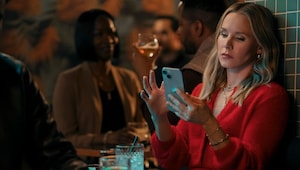
How to break your screen addiction without going off the grid
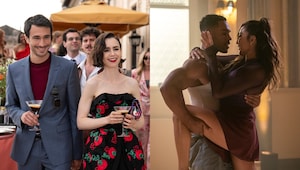
So many truly wild things happened during the 'Emily in Paris' season 5 finale

How ‘The Housemaid’ movie stacks up to the book

Emily is heading back to Paris for season six but is this where we say goodbye?
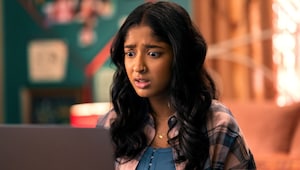
Keeping the camera on or off: What’s the right way to go about professional meetings?

All the cobalt blue essentials you need for your 2026 wardrobe revamp

Beauty sticks are everywhere right now and these are the products worth trying
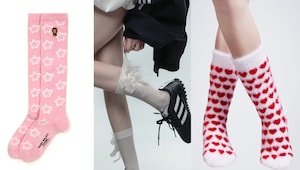
Fun cosy socks you should invest in while winter is still around
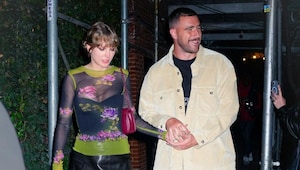
Every couple should fight (Taylor and Travis included)

Choremance is the new dating trend making everyday errands feel romantic
